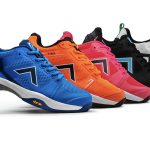Fulfilling loud rumors that a deal was in the works, Adidas and the National Hockey League (NHL) last week announced that Adidas would replace Reebok as the producer of NHL uniforms beginning in the 2017/18 season.
Still, the news led the rampant speculation that the traditional hockey jersey would likely undergo a radical change, including adding advertising on uniforms for the first time for any major U.S. sports league. Adidas and league executives tried to put the focus more on how Adidas, a powerhouse global sports brand albeit with few ties directly to the sport of hockey in its 66-year history, would bolster the hockey category and sport.
The seven-year deal makes Adidas the authentic outfitter of on-ice uniforms as well as an official supplier of licensed apparel and headwear for the NHL. Adidas also agreed to become the exclusive outfitter of both authentic and replica jerseys for the 2016 World Cup of Hockey, the eight-team tournament that takes place in Toronto in September 2016.
According to Canada’s TSN, Adidas beat out rival bids from Under Armour and Performance Sports Group, the parent of Bauer Hockey, and will pay double the current annual rights fee of $35 million.
Reebok, which Adidas acquired along with the CCM hockey brand and Rockport for $3.8 billion in early 2006, has operated the NHL apparel license since 2005. CCM, which Adidas also still owns, will remain the official on-ice equipment supplier.
At a press conference at the NHL’s midtown headquarters in New York City, NHL Commissioner Gary Bettman said Adidas’ takeover of the license will come at an opportune time with the league celebrating its 100th year in 2017.
“Teaming up with Adidas aligns with our strategy of aligning with major partners who not only share our vision for growing the game and the league but also putting innovation at the forefront of what we do for our players and our fans,” said Bettman. “The league’s relationship with Adidas expands already more than a decade through the league’s existing partnership with Reebok. Adidas, with its focus on cutting edge uniforms and apparel, is important to help us continue to extend the reach of our brand and to advance our game.”
Adidas will also work at key events “connecting with our fans through significant activations.” To also support continued growth in the game of hockey, Adidas “will work side by side with us on a number of grassroots initiatives,” added Bettman.
Bettman also said the changeover may begin with the 2016/2017 season if the inventory requirements as well as “variety of mechanical things” can be met.
Don Fehr, executive director of National Hockey League Players' Association (NHLPA), likewise touted the benefits for the league and next year’s World Cup, which will include more than 150 NHL players.
“We wanted a world class partner with us that is willing to grow with us as we continue to grow the game globally and it’s for that reason that the players are particularly pleased and particularly proud to have Adidas on board,” said Fehr. “It’s going to be great partnership and it’s really going to set us off in the right direction for the years to come.”
Adidas pushes for greater relevancy to U.S. sports fans
For Adidas, the deal comes as the brand is aggressively refocusing to increase its presence in key U.S. sports in order to become much more relevant to sports fans in the U.S. market. With hockey the leading sport in Canada, the NHL partnership will also drive growth for Adidas' Canadian business.
“One reason we are really excited about the deal – and there are many – is just the popularity of the sport not only in America but in Canada,” said Mark King, Adidas Group North America president, at the conference. “North America as a place is where this sport is really growing in popularity, whether digital or broadcast. And it really gives us an opportunity to tell sports fans in the largest markets in the world that we’re really a part of this really great game and this really great sport and to really be able to tell our story.”
King also said Adidas’s brand awareness in Europe as well as in places such as Russia will help “take the hockey message and the NHL message around the world.”
The structure the deal includes many features not in the former Reebok contract, including locker room exposure and grassroots activations, he noted. With Adidas also entering into some negotiations with the other major leagues in recent years, King credited the “tremendous transparency” involved in working through the deal with the NHL and NHLPA. Added King, “I would say that on behalf of the negotiation, it was done with integrity and transparency and honesty. We have the opportunity to do some very cool things from a brand and a league perspective that is going to benefit the fans, the players and everyone that the game touches.”
Regarding Reebok, King noted that the NHL deal was initially hatched at a time when Reebok was also entering deals with the NFL and NBA. However, in 2010, Reebok “made a pivot out of sports into fitness” and is now focused on the “fit-gen” (fitness generation) customer who makes exercise “the way they live their life.” As such, Reebok is now closely associated with events and organizations such as CrossFit, Spartan Race and UFC. For its part, the Adidas brand “is about sport. It’s about he games we play and the fans love to watch. And we’re about performance.”
Toward that end, King noted that the NHL and NHLPA were especially enthused about not only the fabric innovations Adidas may be able to bring to the hockey uniform but also the capacity to track player information that the organizations plan to explore together.
“What Adidas does is ‘help athletes perform better’ and yes it's a jersey but there’s more technology is a jersey than you think and I think that’s something you can look at as you go forward,” said King. “So we really, really think Adidas benefits greatly because of the association with the sport and it really allows us to focus the Reebok brand on fitness. So for us, it’s really a way to put these brands in sync.”
King also noted that the overall Adidas Group has long been “very committed to hockey” through its ownership of the CCM brand and CCM’s partnership with the NHL on the hard goods side will continue. King added, “We really believe the combination of Adidas through sport and CCM through equipment allows us to make a really strong and meaningful impact in the sport of hockey.”
King noted that Adidas brand the prior week signed Conner McDavid, the number one pick of the Edmonton Oilers, as its first hockey endorsement deal and more major signings will be announced in the next few weeks. Sidney Crosby, P.K. Subban and other former Reebok endorsers are reportedly in talks to become the faces and voices of Adidas’s ramped up hockey marketing plans.
Changes to iconic hockey jersey feared
Many of the follow-up questions concerned whether big changes in the look of the NHL hockey jersey should be expected with the changeover. Many hockey observers are assume that advertising will be explored for uniforms to cover the cost of the deal. European hockey already has ads on jerseys.
Bettman wouldn’t rule out that those discussions may take place one day to explore new revenue streams for clubs but also noted that no discussions around advertising on uniforms has taken place “”formally or informally.” He noted that he has been “fairly vocal” in recent months asserting that the NHL is not currently considering putting advertising on uniforms.
However, some discussions have taken place between the NHL and NHLPA about ads on World Cup jerseys.
“What the World Cup does, as well as other international events when we get to the point of getting those accomplished, is to give us among other things, an opportunity for some experimentation – an opportunity, if we want to, to try different things,” said Fehr.
The other main topic was whether the hockey jersey would likely undergo a radical design that often comes when a new licensor takes over. Reebok drove the last major redesign by adding piping edge and new technologies a decade ago.
King said improvements would likely come on the performance side, such as adding “TechFit” technology now being used on college football uniforms for the University of Miami and Arizona State to make jerseys lighter and give the players greater mobility.
“It's a dramatic shift from where the uniform is today, but that would be probably the first thing we would look at,” King said. “That would be the logical place to go, but it completely changes the look of the hockey player.”
He stressed that the hockey jersey is a “very traditional and very much a fabric of the game” and the league and players association would “ move slowly” on any changes.
Bettman likewise said the league has no plans to “revamp” its jerseys.
“Everybody agrees that the history and tradition that goes with NHL sweaters is something that we and Adidas are very respectful of,” said Bettman. “Reinventing isn't something we're about to embark upon. If there are better fabrics that are more comfortable and help performance, that's one thing. But we happen to like our jerseys a lot, and we think our fans do as well.”
NHL chief operating officer John Collins said no final decisions had been made on any design changes.
“We have the flexibility of working closely with Adidas to figure out what represents the brand best and what represents the new design of the uniforms,” Collins said.
The NHL deal comes as Nike recently reached a deal to replace Adidas as the similar uniform sponsor of NBA in 2017. King said Adidas “pursued a new deal with the NBA for many months and couldn’t come to a reasonable agreement that was good for them and good for us and we walked way from the deal.”
In 2012, Nike also took over the NFL deal, which had been run by Reebok. Asked whether Adidas was more cautious around league deals, King stated that league sponsorship deals “at any price don’t work but we need to have associations with the major leagues.”
The NHL will join MLS (Major League Soccer) as the other professional U.S. sports leagues officially licensed by Adidas. Last week, the CFL (Canadian Football League) announced that Adidas would be taking over from Reebok as the league's official outfitter starting next season.
Elaborating on the NHL deal, King said the league is “really the sport in Canada, where they have a massive business. Could you imagine a sports brand in Canada without hockey as a part of it? And it’s growing at every level here in the states. So this was an important deal for us as you look at the business side of it, not just the branding side.”
Retailers generally pleased with Adidas takeover of NHL license
Interviews with a few hockey stores showed that Reebok had done a solid job supporting the NHL licensed jersey over the years and that’s expected to continue with Adidas.
While Bauer might would have been the brand most closely linked to hockey, it’s not as advanced on the jersey construction side as Adidas. One merchant at a larger hockey chain also had an issue with Bauer’s recent move to open several of its own “Own the Moment” Bauer hockey stores.
Under Armour was seen as a strong potential option with the momentum around the brand. Many hockey stores also sell lacrosse, where Under Armour is a major player, and UA is making strides establishing a foothold in hockey.
But Adidas was also generally seen as a strong upgrade over Reebok, which is distancing itself overall from team sports.
Jeff Ponder, head of marketing at Total Hockey, was enthused about what Adidas might bring to on-ice jerseys, as well as to licensed apparel and headwear.
“Reebok brought a new style to NHL apparel, including sleek and innovative designs in the Reebok Edge jerseys introduced in 2005,” said Ponder. “The slimmer design helped further along the speed of the game, allowing players to be more aerodynamic while not exhausting as much energy. The look of the jerseys improved the game from an aesthetic standpoint, as fans could enjoy the game in a crisper and cleaner fashion.”
Ponder believes there’s “not a more well-known name in sports branding than Adidas throughout the world” and the brand is already a highly-reputed supplier of hockey jerseys to its endorsed schools, such as Notre Dame and the University of Denver.
“The game can only continue to reach new audiences and grow faster than ever with Adidas involved,” said Ponder. “We expect all retailers, such as ourselves and all of our competitors, to only prosper when Adidas items hit the shelves in 2016.”
David Reskey, store manager at the Hockey Monkey store in Irvine, CA, believes that there’s “going to some confusion” among hockey traditionalists seeing Adidas on a jersey with Adidas having little ties to the sport of hockey.
However, Reebok eventually overcame such concerns to become a staple on jerseys. Nike, entering the hockey jersey market with its 2005 acquisition of Bauer, also continues to make hockey jerseys every four years during the Olympics and they’re still “very sought after by fanatics,” added Reskey. He suspects once fans learn “the backstory” of Adidas’ ownership with Reebok as well as CCM, they’ll be more open to Adidas hockey branded product.
Another merchant, who declined to be attributed, said he was “generally pleased” with NHL partnering with Adidas, suspecting a “logo switch and hopefully nothing more” with the transition from Reebok to Adidas jerseys. A shift to Under Armour would have been “interesting” with UA’s increasing visibility against Nike. But the merchant described Reebok as a “dying brand in the team sports business in the equipment realm nearly all brand equity has been transitioned to CCM over the past two years.”
While the merchant believes Adidas is not as well recognized as Nike in the U.S., “I shudder to think about what a brand like Nike would have done design-wise to NHL jerseys with the license. I suspect it would have angered traditionalists.”















